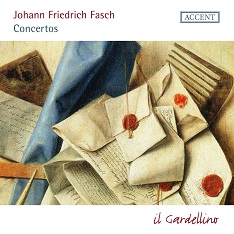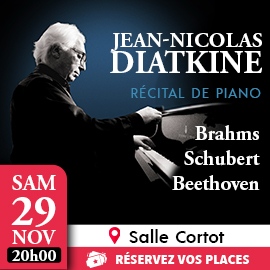Als Johann Sebastian Bach 1722 die Stelle als Thomaskantor annahm, war er für die Leipziger nur zweite Wahl. Telemann, Graupner und Johann Friedrich Fasch hatten zuvor abgesagt. Fasch war ab 1722 eng mit dem Zerbster Fürstenhof verbunden. Dort war er bis zu seinem Tod 1758 sechsunddreißig Jahre lang als Hofkapellmeister tätig. Für diese Stelle zog er auch seine Bewerbung auf das Thomaskantorat in Leipzig zurück.
Am Zerbster Hof blieb Fasch letztlich aber ein zweitrangiger Kleinmeister. Doch wegen seiner Aufwertung der Blasinstrumente und seiner Klangphantasie ist Faschs Musik nicht zu verachten.
Obwohl er mittlerweile bekannter ist, ist seine Popularität, aufs Ganze gesehen, noch recht bescheiden.
Die zwölf Konzerte dieses Albums, davon 11 für Bläser, überraschen durchweg mit einer musikalischen Sprache, die ganz im Geiste der Zeit italienische und französische Einflüsse in einer persönlichen Ausdrucksweise mischt.
Die schnellen Sätze sind sehr vital und farbig, die langsamen Sätze überzeugen mit fein dosiertem Affekt.
Il Gardellino gehört nicht zu den Ensembles, die alte Musik im Tempo anheizen, um sie ‘furios’ zum Wirken zu bringen. Im Gegenteil: diese Musiker lassen die Musik völlig natürlich in ihrer ganzen Farbenpracht erklingen, verzieren sie üppig und bringen sie so verspielt und graziös an den Zuhörer heran.
Homogen und dennoch glasklar gestaltet die Truppe Faschs Musik, wobei über allem der Eindruck spontaner Musizierfreude und wohltuend vitaler Lebendigkeit schwebt.
When Johann Sebastian Bach accepted the post of Thomaskantor in 1722, he was only second choice for Leipzig. Telemann, Graupner and Johann Friedrich Fasch had previously refused to accept the position. Fasch was closely associated with the Zerbst royal court from 1722. He worked there as conductor for thirty-six years until his death in 1758. He also withdrew his application for the Thomaskantorat in Leipzig for this position.
At the Zerbst court, however, Fasch ultimately remained a secondary minor master. However, Fasch’s music is not to be despised due to his appreciation of wind instruments and his sound imagination.
Although he is now better known, his overall popularity is still quite modest.
The twelve concertos on this album, 11 of which are for wind instruments, surprise throughout with a musical language that mixes Italian and French influences in a personal style in the spirit of the time.
The fast movements are very lively and colorful, the slow movements convince with finely dosed affect.
Il Gardellino is not one of those ensembles that heat up the tempo of early music in order to make it ‘furious’. On the contrary: these musicians allow the music to sound completely natural in all its colorful splendor, decorating it lavishly and bringing it playfully and gracefully to the listener.
The ensemble performs Fasch’s music in a homogeneous yet crystal-clear manner, with the impression of spontaneous musical joy and pleasantly vital liveliness hovering over everything.




















